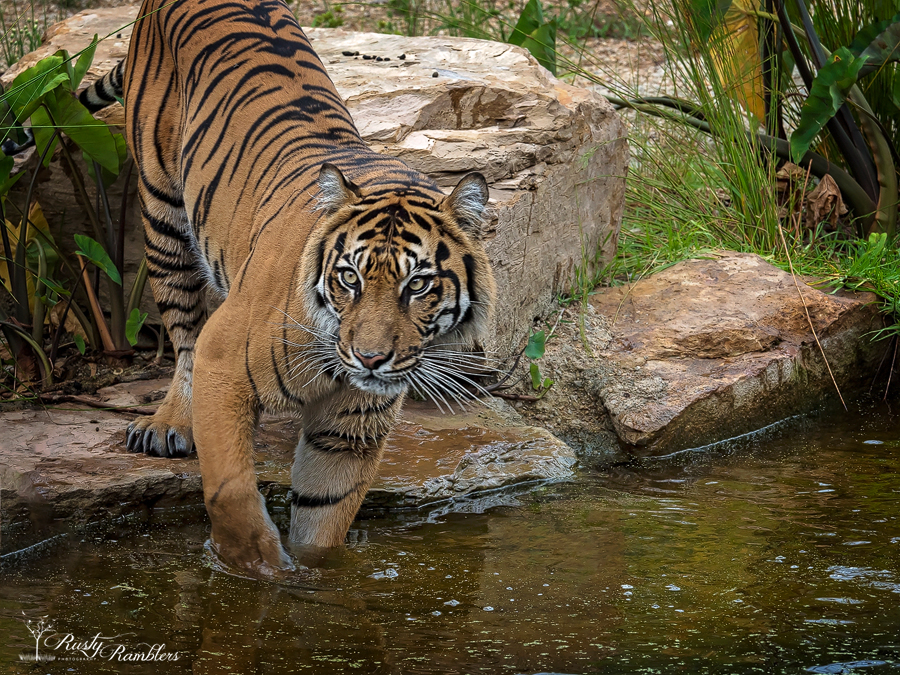Tag:melbourne
Melbournes newsboys were a familiar sight on the city’s streets from the mid-19th to the mid-20th centuries. They were typically young boys from poor families who sold newspapers to earn a living. The first newsboys in Melbourne appeared in the 1840s, and their numbers grew rapidly in the following decades. By the 1890s, an estimated 2,000 newsboys were working in the city.
Newsboys, usually aged between 8 and 16, often worked in challenging conditions for long hours. They braved the elements and were sometimes subjected to violence from customers or other newsboys. You could find them at popular locations such as Flinders St Station, the Town Hall, Young and Jackson pub, theatres, and other pubs. These spots were highly sought-after by newsboys as they were perfect for distributing newspapers.
The Rise of the Newsboys
During the late 19th and early 20th centuries, Melbournes newsboys emerged as an integral part of the urban landscape. Armed with stacks of newspapers under their arms, these young entrepreneurs eagerly took the day’s news to the city’s residents. Often hailing from lower-income backgrounds, these young boys found an opportunity to earn a living and contribute to their families’ financial well-being.
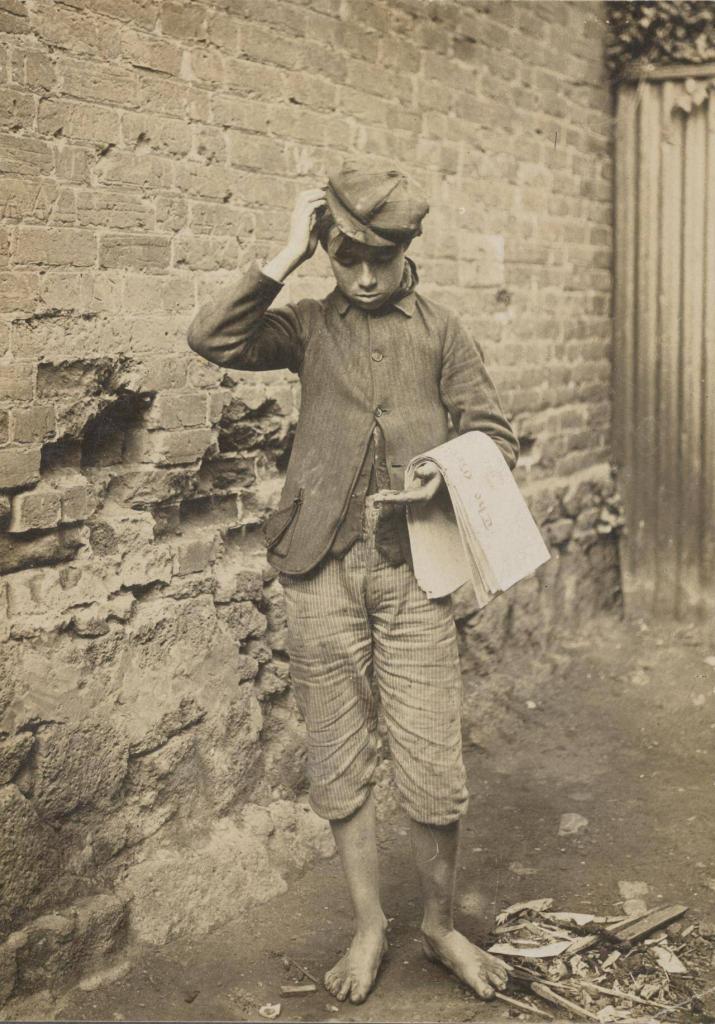
In 1891, the Education Department convened a special committee to consider what would be done about the city’s neglected children. It was estimated that upwards of 10,000 children were not attending school at all. The report recommended that newsboys be licensed and wear a badge displaying where they went to school. No boys under 17 should be allowed to trade on Saturday nights after 8 pm or 9 pm. Girls under 18 years of age were forbidden to apply for a licence at all.
The newsboys were a diverse group, coming from various cultural backgrounds and ages ranging from as young as six to teenagers. They were a familiar sight to Melburnians, darting through the streets, their voices echoing with the cries of “Extra! Extra! Read all about it!” as they offered the latest editions of newspapers.
Life as a Newsboy
Many city newsboys were often barefooted rather than wearing boots so they could run faster. The boys had their own pitches, gangs and hierarchies — the leader of the mob could have his mates around him in a trice with a quick whistle. One such gang was Crutchey, Tabby-cats, Spud, Little Charlie, Snowy, Curley, Sport, Jack, Cock-eye, Battler, Spud, Fossie, Dicko, Soldier, Morry, Tom, Ginger, and all their mates.
Being a newsboy was a tough job, and the young entrepreneurs who did it had to overcome many challenges and obstacles. They had to endure harsh weather conditions, carry heavy newspapers, and navigate through chaotic city streets. Their success depended on their salesmanship skills, as they had to persuade people passing by to buy the newspapers they were selling.

When not selling papers, the boys had a reputation for roaming the alleyways: ‘whiffing cigarettes, chewing tobacco, swearing and fighting,’ or gambling their earnings in the game, ‘pitch and toss’
Running afoul of the law
By the turn of the century, many saw newsboys as a public nuisance. Lawmakers began charging them under an obscure council by-law, which prescribed that: “No person shall make any violent outcry, noise or disturbance in or on any of the streets, carriageways, footways, or public places within the City of Melbourne to the annoyance of any person or persons frequenting the same“.
Boys could also be charged for using fictitious headlines to lure passersby to purchase their newspapers. In February 1914, newsboy John Quilty was fined one pound for calling out: ‘Herald, final edition, a full account of the Fern Tree Gully railway accident.’
The headline about an accident was a work of fiction. Constable A.E. Strickland led the effort to apprehend newsboys shouting on the streets, accusing them of causing a “violent outcry” (as reported in Truth on June 28, 1903). As a result, many of these newsboys were brought to court, fined, and given a week to pay. They would be incarcerated for a week if they failed to pay within that timeframe.
The Newsboys Foundation
Miss Edith Charlotte Onians, a 28-year-old woman from a devout and wealthy Anglican family, began dedicating her life to helping underprivileged boys in Melbourne. With her help, life for the boys improved in the 1920s. Onians played a significant role in establishing and developing the Newsboys Foundation in Melbourne, Australia.

Photograph by L. Shea. Courtesy of Mitchell Library, State Library of New South Wales; 9624429
On a wet afternoon late the previous year, she had come across the first of Melbournes newsboys as they waited for a delivery of papers. They were floating bits of wood with improvised sails down the flowing gutters, wagering their pitifully small earnings on the race. Most were intermittently homeless. They slept rough on the Yarra riverbank or in the Richmond paddock by the old morgue. None could read or write.
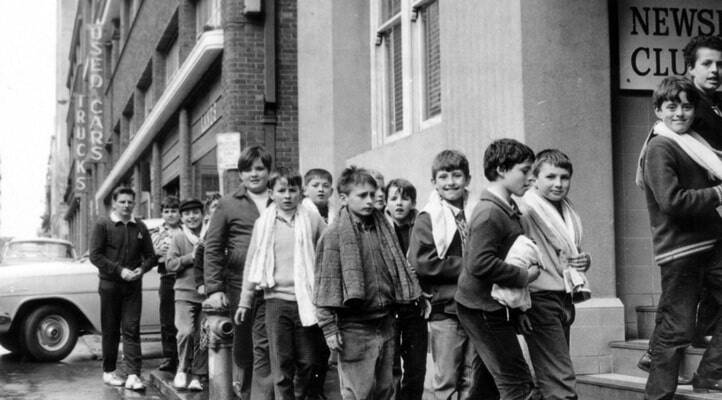
Young boys who worked as newsboys during the early 20th century faced numerous difficulties, such as poverty, limited educational opportunities, and harsh living conditions. Moreover, they were at high risk of being victimised by sexual predators. Onians was aware of these challenges and dedicated herself to finding solutions. She became involved with the City Newsboys’ Try Society, founded in 1893 and later known as the Melbourne Newsboys’ Club. She started volunteering there and asked the boys if they would attend a school class if she organised one. They agreed to try it out. It was the beginning of her lifelong commitment to the cause.
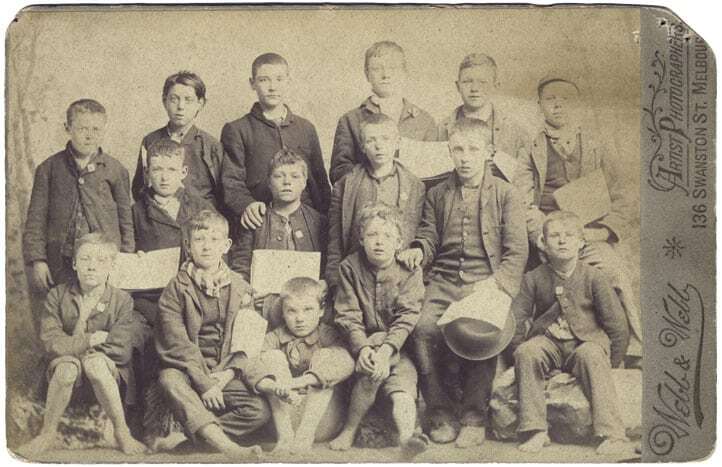
The Newsboys Homes
The Newsboys’ Homes were established as safe havens for newsboys, offering them shelter, education, and guidance. Onians believed in providing these young boys with a nurturing environment where they could grow, learn, and thrive. The Homes provided accommodation, educational opportunities, and vocational training, empowering the boys to break the cycle of poverty and build a better future for themselves.
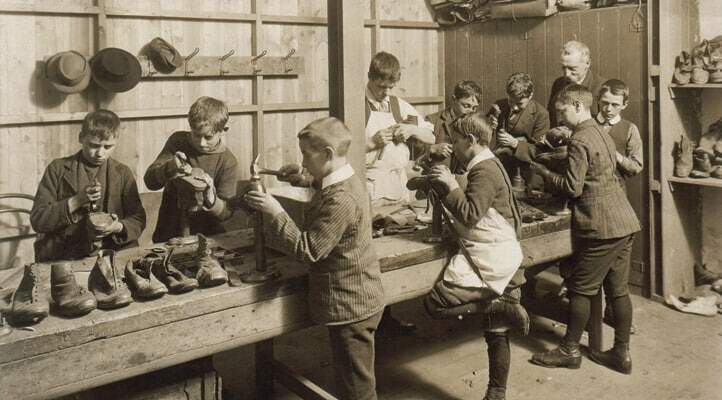
Over time, the Newsboys Foundation expanded its reach and broadened its scope to include support for disadvantaged youth beyond Newsboys. The organisation extended its programs to include scholarships, mentoring, and funding for educational initiatives. Over the years, it continued to adapt and evolve to meet the changing needs of young people in Melbourne, focusing on empowering them to reach their full potential and succeed in life.
The introduction of the Street Trading Act in 1958 meant that no boy under the age of 12 was allowed to sell newspapers in Melbourne. Those between the ages of 12 and 14 could only do so with a licence. The newsboys of Melbourne left an indelible mark on the city’s cultural and historical narrative.
Education pays off
Onians believed that no child was irreclaimable, and she proved that tenfold through the Foundation’s providing education to the boys. More than 20,000 boys passed through the Foundation, with many succeeding greatly in their respective fields. Melbournes Newsboys went on to become religious ministers, barristers, dentists, and notable sportsmen. Victorian boxing title-holder Norm Gent and former amateur welterweight champion Bill Seewitz were particularly noteworthy among the athletes. Champion wrestlers Bill Davies, Paul Buckley, Olympian Bob Clarke, and footballers Fitzroy captain Alan (Butch) Gale and North Melbourne skipper Les Foote were also among the accomplished athletes. In addition, former newsboy Vic Hartney became a jockey and won the 1943 Melbourne Cup on Dark Felt, while Len Woodhouse became the Australian middleweight weightlifting champion. Basketball players included All-Australian Tommy Nash and state representatives Eric Lund and Norm Davenport.
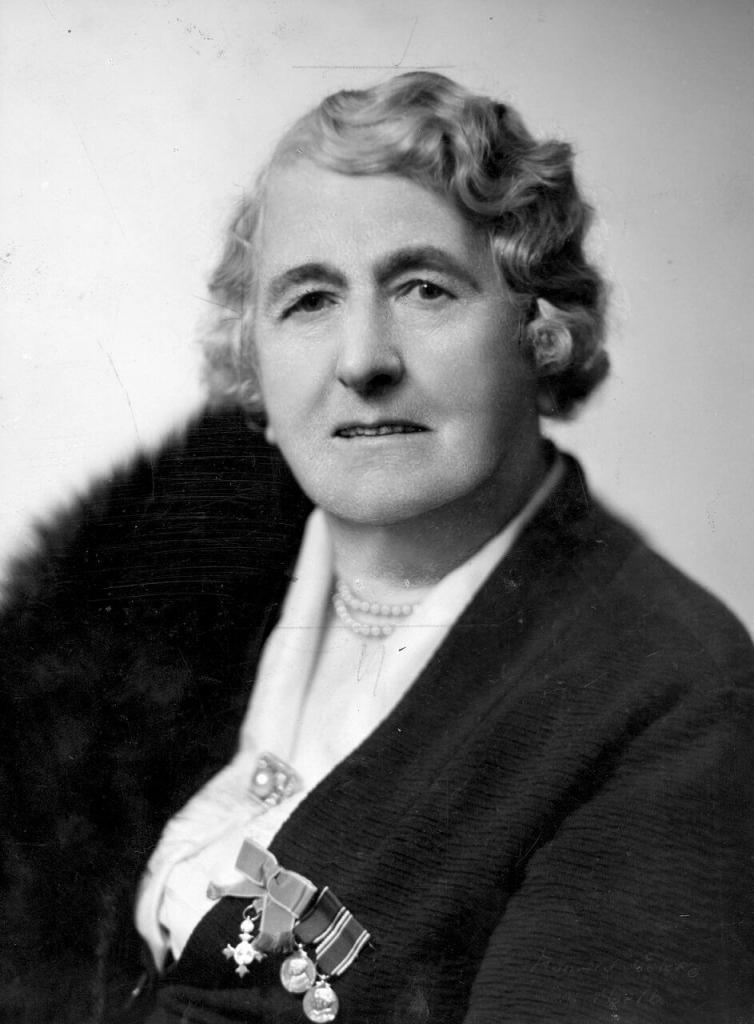
Reproduced courtesy State Library Victoria
Among the former newsboys were a librarian, several mayors, a president of the Returned Sailor’s, Soldier and Airmen’s Imperial League of Australia, a special magistrate of the Children’s Court, several tram conductors, a bookie, and a successful chef with a thriving business. All in all, 626 boys signed up and fought in WWI, with some losing their lives at Lone Pine, the Somme, North Africa, and the skies over Germany in WWII. However, thousands of other newsboys became exemplary fathers, devoted husbands, diligent workers, compassionate businesspeople, and conscientious members of society.
The Legacy of the Newsboys
The memorable cries of “READ ALL ABOUT IT!” or “Get your “ERRR-AAALD!” still echo in our minds. These newsboys played a crucial role in shaping public opinion and spreading information. Their infectious enthusiasm and unwavering dedication to sales made them more than just newspaper sellers; they were messengers of the changing times. The newsboys of Melbourne were not just people who sold newspapers. They embodied resilience, determination, and entrepreneurial spirit. In doing so, they became essential to the city’s history and helped the news industry grow.
Melbourne Zoo, considered among the best zoos in the world, was founded by the Acclimatisation Society of Victoria in October 1857 in Richmond. The zoo opened in its current location on October 6 1862, when it moved from Richmond to Royal Park on land donated by the City of Melbourne. The higher grounds of Royal Park were considered more suitable for the animal’s health than the damp ‘Richmond Paddocks’.
History
Modelled on London zoo, it is Australia’s oldest zoo and one of the world’s best. Like other zoos in Sydney, Perth and Adelaide, the early days of the zoo practised ‘acclimatisation’ of exotic species. The zoo housed animals in small enclosures at the Royal Botanical Gardens, where they recovered from the long sea voyage before being introduced to the Australian environment. Pople in those days thought animals such as blackbirds, pheasants, quail, salmon, camels, goats and sheep could prove valuable sources of food and income.
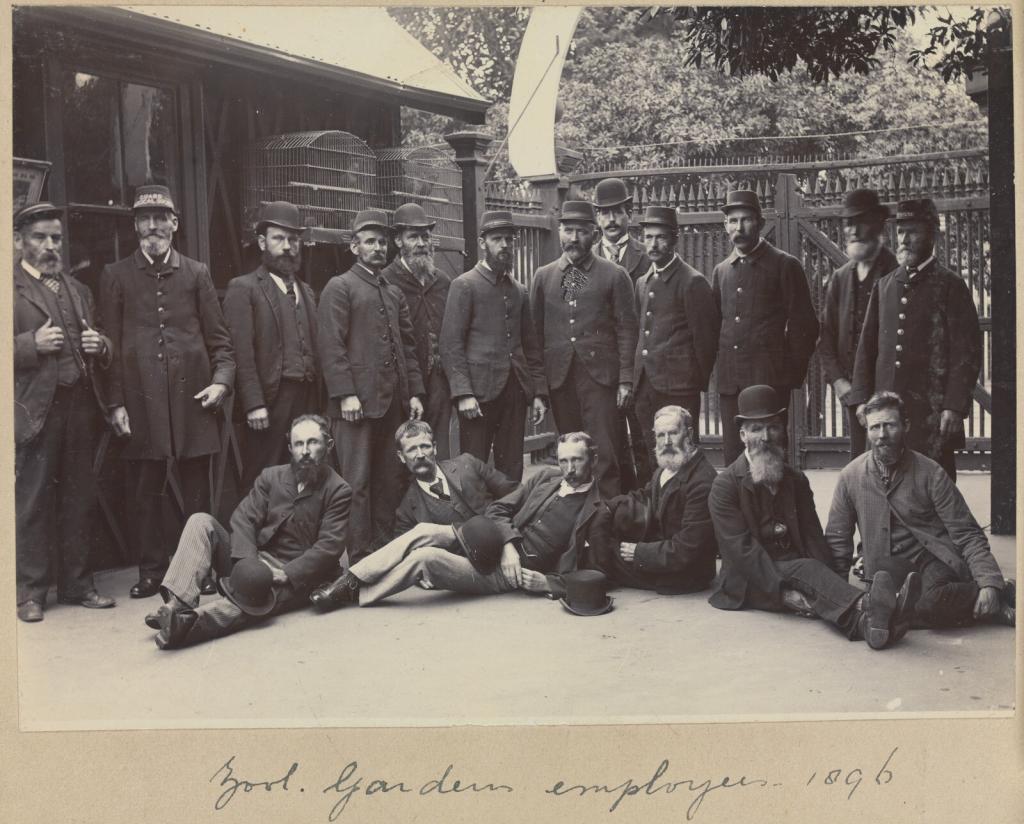
However, despite the move to Royal Park, by the late 1860s, the zoo was in financial trouble. The public had lost interest, and Albert Alexander Cochrane Le Souëf (1828-1902) was appointed the first Director of the Zoo. To save the zoo, he made several significant changes. Le Souëf expanded the zoo’s role by building a collection of animals for the amusement and education of Melbourne’s citizens. Additionally, he developed extensive gardens and picnic areas. By 1880, Melbourne Zoo’s animal collection included lions, tigers, a panther, deer and hoofed animals such as sheep and cows. All of which were considered exotic for the colony at the time.
Early Animals
In 1881, an elephant and an orangutan arrived, followed by rhinos, hippos, bison, zebra and giraffe. Wallace the lion, came in 1891 and was famous for his love of classical music. During the first half of the 1900s, visitors could ride on Queenie the Elephant, throw peanuts to the bears or watch Mollie, the orangutan smoke a cigarette in her enclosure.
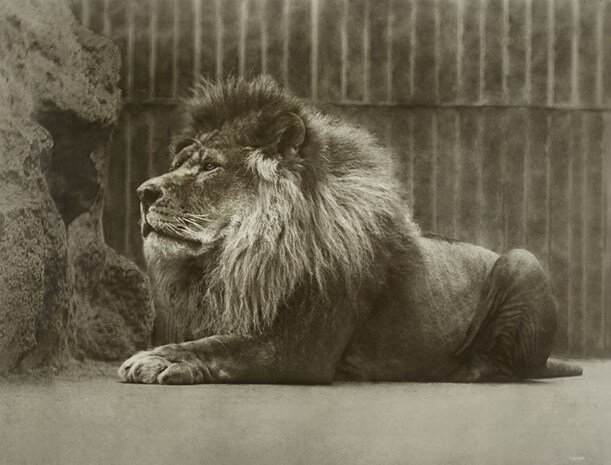
Mollie the Orangutan was one of the zoo’s most beloved characters in the early 1900s due to her intelligence, quirky personality, and the human-like habits she was taught. She came to the zoo in 1901 at only a few months old and remained a crowd favourite until she died in 1923. From the late 1800s and early 1900s, the humanisation of animals was common in zoos worldwide, and Melbourne Zoo was not exempt from the practice. Mollie was known for her ability to light and smoke cigarettes and drink alcohol and her elaborate ritual for setting up her bed each night, using hessian sacks in her cage.

Unfortunately, Mollie also had a habit of setting her bedding on fire due to her talent for lighting matches. After she partially burned down her wooden enclosure, it was replaced with a concrete one. Following her death, Mollie was stuffed and displayed at the Melbourne Zoo.
Elephant Rides
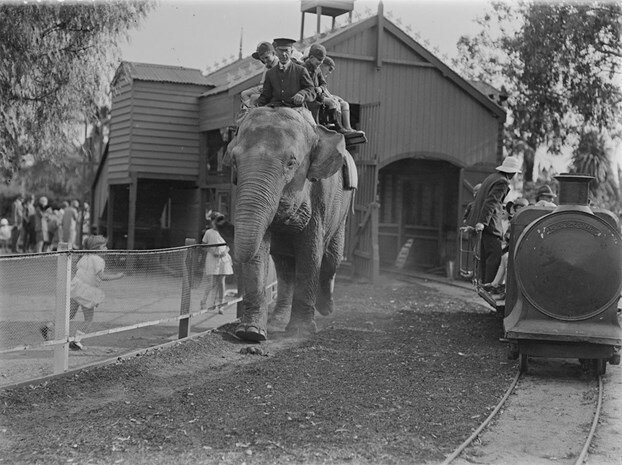
Melbourne Zoo had three elephants, Queenie, Betty and Peggy. Queenie, loved for her gentle nature, was a significant zoo attraction for over 40 years at Melbourne zoo. She walked a circuit giving daily rides to up to 500 children for tuppence each. Children would place apples and peanuts on the circuit posts for her to eat as she passed by. However, on September 19, 1944, she sadly crushed and killed her keeper at the end of her working day.
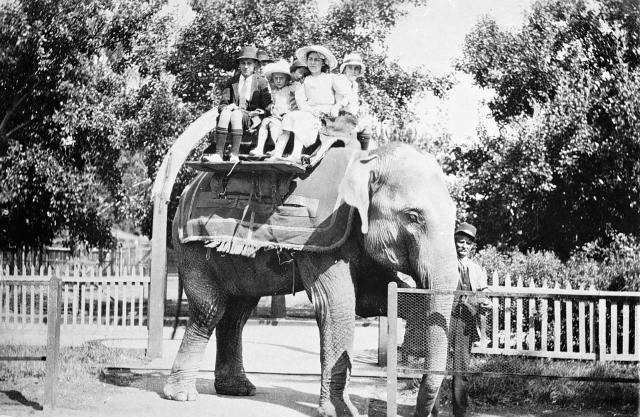
Following the incident, the zoo retired Queenie from giving rides and Peggy and Betty took over giving rides. After public support, the zoo decided to keep her as an exhibit. However, in 1945, she was put down. The reason given for this was that it was wartime, fodder was scarce, and the zoo could not afford to keep her. By 1962 elephant rides at the zoo had ceased for safety reasons.
Ethical Zoos
Thankfully times have changed. Modern zoos of today bear no resemblance to their predecessors. Capturing animals in the wild for display is now illegal. The cramped, concrete and brick steel-barred cages are gone. Instead, their natural bio-climatic habitat is recreated. Subsequently, they have room to roam. Melbourne zoo is part of a world-leading organisation dedicated to fighting extinction. As a not-for-profit organisation, the funds raised from visitors are ploughed back into helping wildlife. Zoos Victoria – the parent organisation of Melbourne Zoo, Healesville Zoo, and Werribee Zoo is involved with more captive breeding programs than any other organisation in Australia.

“I justify zoos providing they are scientific, providing they are selective about what they keep and provided they keep them to the highest possible standards. That’s okay by me,”
Sir David Attenborough
While zoos are loved by many, they still have their detractors. Opponents of zoos argue that conservation doesn’t justify keeping animals in captivity.
‘PETA doesn’t believe that animals are ours to use for entertainment,’
Claire Fryer, PETA
Captive Breeding Success
In 2021 Melbourne zoo released 8 critically endangered Plains Wanderers back into the wild. They also successfully bred 50 Grassland Earless Dragons, 4 Mountain Pygmy possums, 21 Helmeted Honeyeaters, and 11 Eastern Barred Bandicoots.

Moving the Elephants
Melbourne Zoo has a herd of 6 Asian elephants – at the time of this post, three are pregnant after conceiving naturally. The three elephants will all deliver towards the end of 2022. While the Melbourne Zoos ‘Trail of the Elephants‘ is ‘award-winning’, I have always disliked it. It’s a dusty or muddy enclosure (depending on the season) that seems way too small for them. They are rotated through three different enclosures, but none are large. However, the good news is the entire herd will move to Werribee Open Range Zoo in 2024 after an $87 million expansion. The new space at Werribee Zoo will give the elephants 22 hectares to roam across the savannah with the zebra, Rhino and Giraffe.

Visiting the zoo
Melbourne zoo is open every day from 9 am to 5 pm.
Adult entry is $42; Seniors are $38 and Concession $31.50. Children under16 are free on weekends, public holidays and school holidays. At all other times, children are $21.
It is summer in Australia. Warm sunny days and blue, blue skies. All Aussies thoughts turn to beaches. White sand, blue foamy waves lapping at the shore, and mermaids, sitting on rocks on the seashore.

OK.. granted… not everybody thinks of mermaids on rocks, on the seashore. But photographers are a little outside the square. The thought popped into my head when I was planning a seascape shoot. What to do that makes it a bit different… hmmm …just add a mermaid or two.

I sourced their tails and wigs, added headbands. We chose a nice spot down Sandringham and arranged for a sunset time slot. Naturally, the sunset was extremely ordinary, a nice bit of colour but no clouds to bounce light off. However, being as I am not a purist, I am happy to swap skies out if it improves the image. I know, I’m a philistine.


Both our models, Jess Carolyn and Jess Garrett were awesome to work with. They had to shimmy and roll across the sand, as walking with that tail on, was out of the question. We photographed them on various rocks and on the seashore, before asking them to get into the water for the last half hour.


The water was cold. Very cold. But they were total professionals and troopers and got in the water. Gasped in shock as the cold water hit them. Then smiled for shots between the cold waves.

A huge thank you to both girls. You made an idea a reality and your cheerful personalities made it a fun night.
Blue Mermaid: Jess Carolyn aka Miss Fairyfloss
Pink Mermaid: Jess Garrett
Spray Tans by Gorjess Beauty Mobile Spray Tans
“The introduction of a few rabbits could do little harm and might provide a touch of home,” Thomas Austin
Rabbits!
Thomas’s fondness for rabbit hunting led to rabbits in plague proportions across Australia and the building of the Rabbit-Proof Fence across Western Australia between 1901 and 1907 to stop the spread of rabbits into the state from the eastern states. Thomas was a member of the Acclimatization Society of Victoria. The society introduced non-native animals and plants to the growing colony – as a member, Thomas also brought in blackbirds and partridges. Thomas Austin and his wife Elizabeth built the lavish 42-room mansion in 1871. He died just six months after it was completed, but Elizabeth lived at Barwon Park until her death in 1910 and became a noted philanthropist. One of her biggest accomplishments was funding the Hospital for Incurables (later the Austin Hospital) in Heidelberg.
Thomas Austin and his wife Elizabeth built the lavish 42-room mansion in 1871. He died just six months after it was completed, but Elizabeth lived at Barwon Park until her death in 1910 and became a noted philanthropist. One of her biggest accomplishments was funding the Hospital for Incurables (later the Austin Hospital) in Heidelberg. 
National Trust
In 1912 the house was sold Batson family, who later bequeathed it to the National Trust. At the time of the bequest, while the house was still virtually an intact relic, it had fallen into serious disrepair, and much of the furniture, artworks, and silverware had been sold off to provide an income for the two sisters and one brother left in the house. The National Trust has since repaired the mansion and fitted it out with furniture that had been part of the house – or of the time.
The Grand Staircase
The staircase was the first of its kind in Australia – being that it led directly up the centre of the hall and then branched left and right… rather than being on the side of the hall, as was the norm. And while it does look exactly like the one at Werribee Mansion – it was built three years prior to Werribee Mansion. Thus, it was the Austins to introduce the style to Australia. It was also built which much wider steps than normal to allow the ladies to descend the staircase gracefully and make a ‘grand entrance.
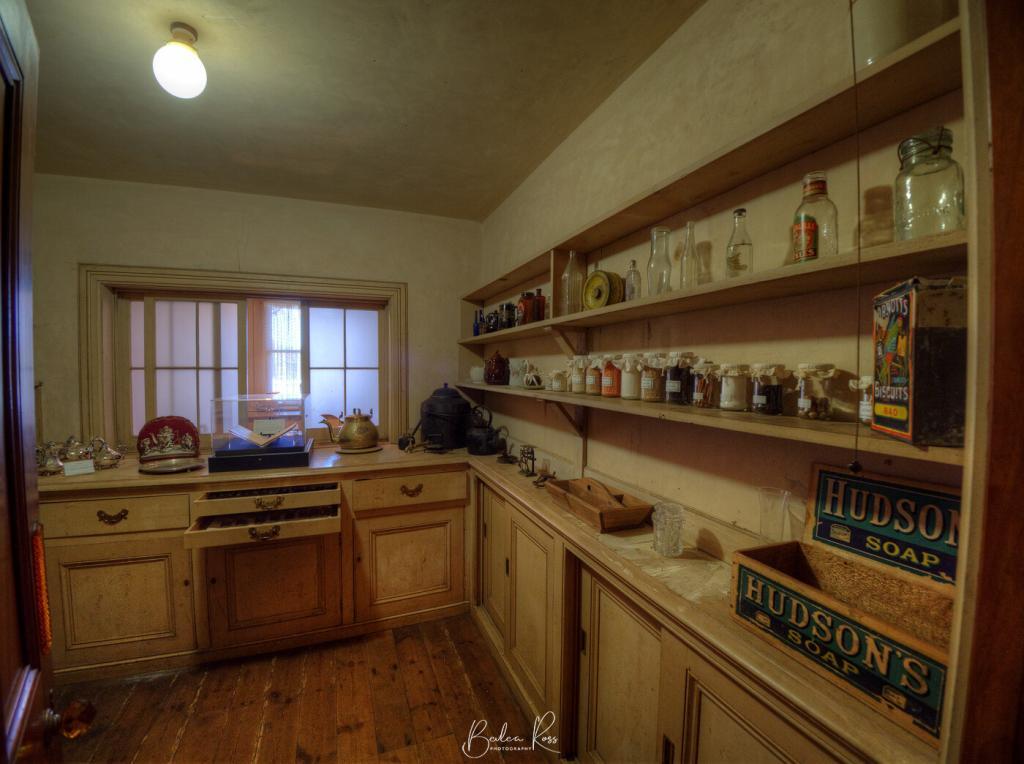
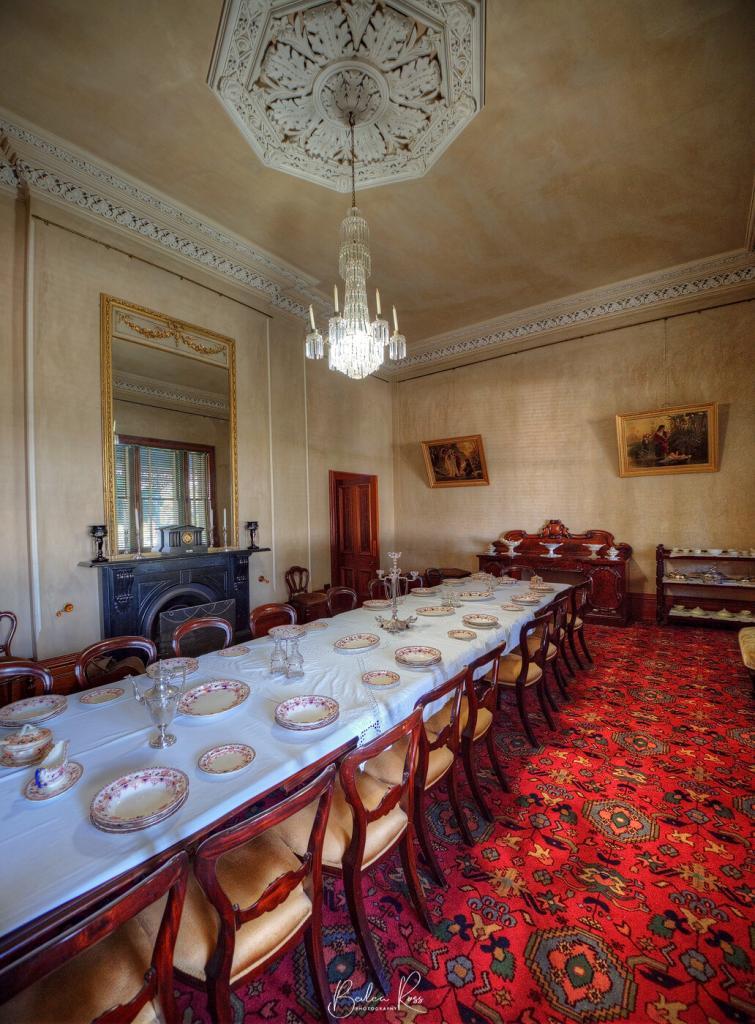
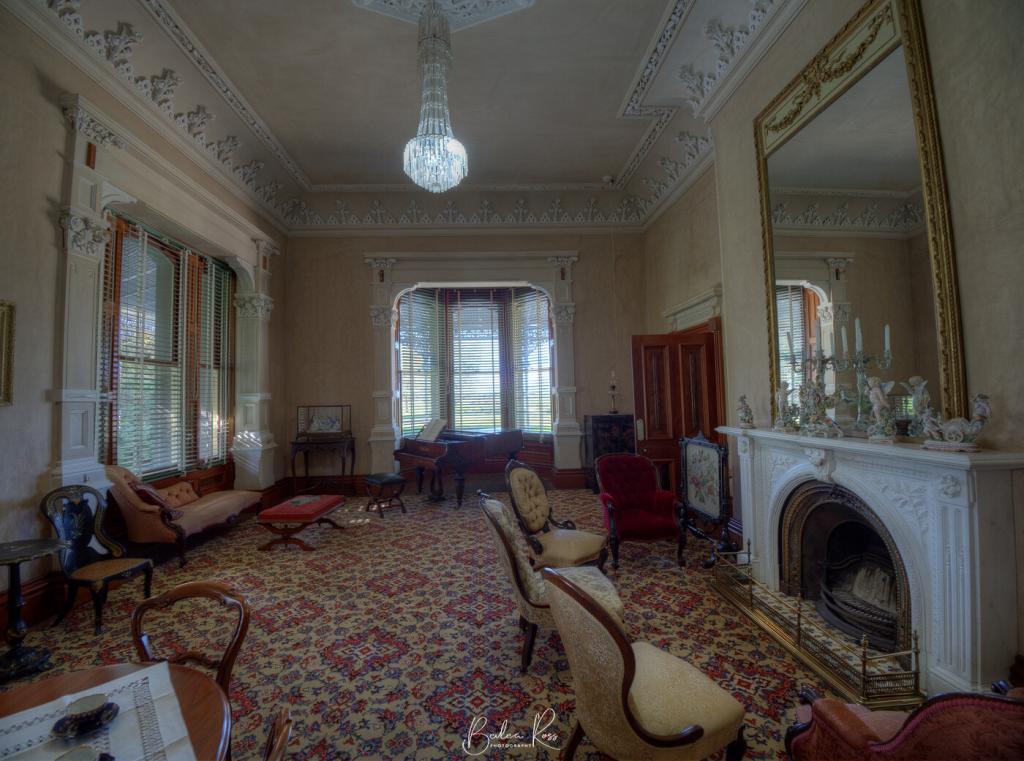
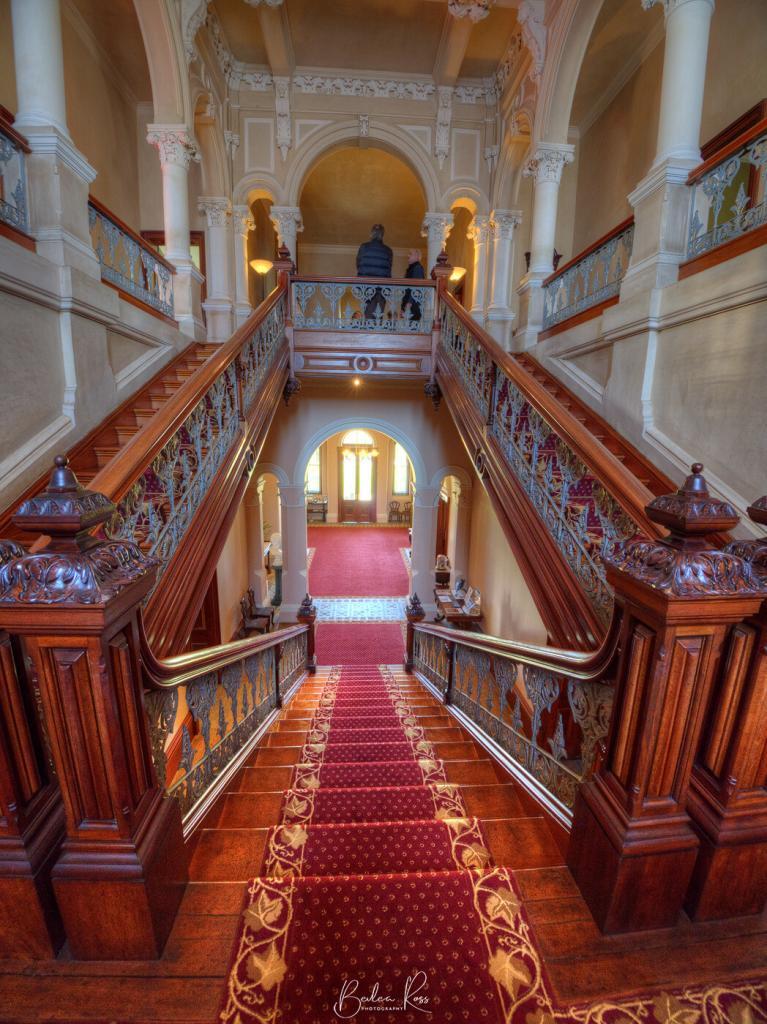
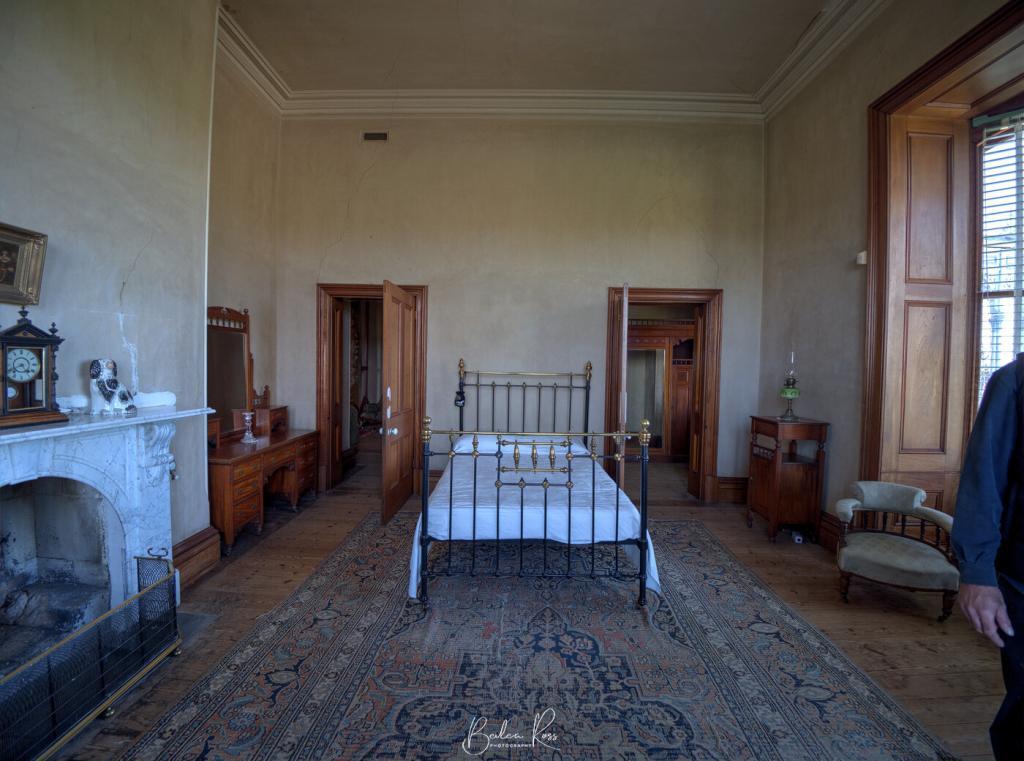
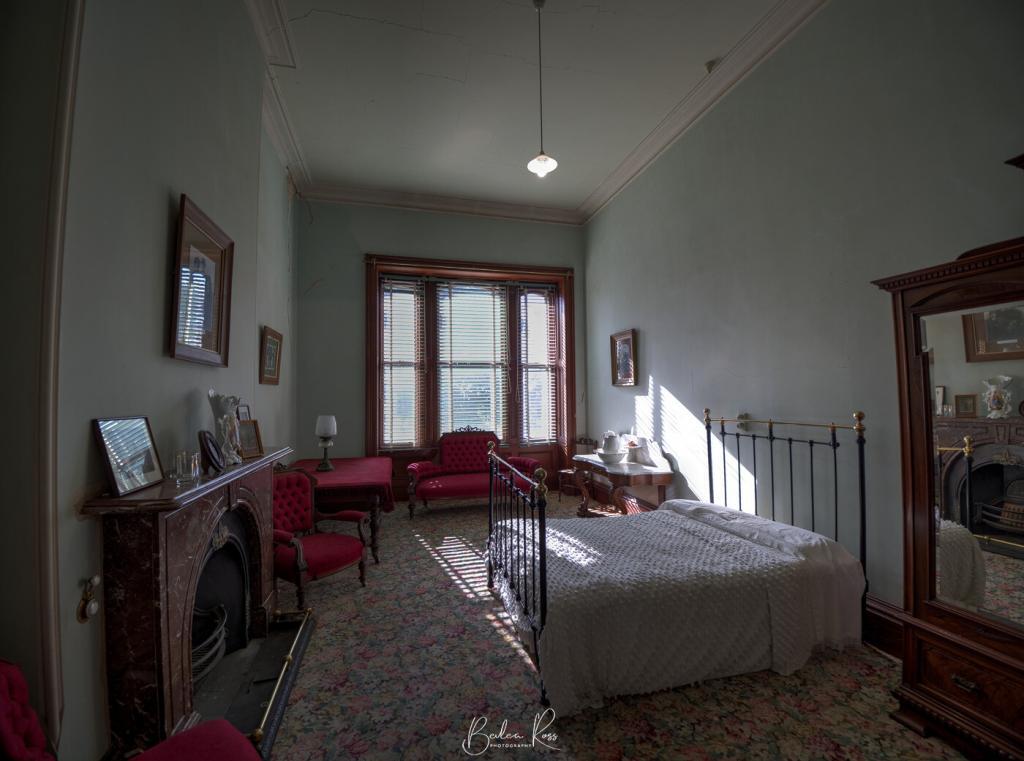
Address:
Barwon Park Mansion: 105 Inverleigh Road, Winchelsea 3241 VICOpen:
Open Wednesday and Sunday, 11 am to 4 pm. Tours run at 11am, 12pm, 1pm, 2pm and 3pm. Group tours are available by appointment. A Virtual Reality headset is available for mobility-impaired visitors courtesy of the State Trustees Australia Foundation.Cost:
National Trust members: Free Adult: $10 Concession: $7 Child: $4 Family (2 adults + 2 children): $20This week, along with three fellow photographer friends, we had planned to do some Fungi Hunting at Mt Macedon. So, we rugged up against the weather and headed to Sanatorium Lake at Mt Macedon. Weather-wise it was clear, with only slight showers, but it was 6C at the lake. Cold, cold, cold. That kind of damp, chilling cold that just seeps into your bones. Rugged up like Michelin people, we left the car and headed for the lake. The track was easy to follow, muddy, but not too bad.

On the hunt
We slowly walked along the path, eyes swivelling back and forth, looking for fungi and checking the sides of tree trunks and deadwood lying on the ground. When we found one, we noticed that there would be others in the immediate area. Never saw a single one by itself. We went off the path into the scrub in several areas where we spotted them. Some were just too hard to photograph either because they were inaccessible, way up a tree, or the tree was on such a slope that we needed to be mountain goats to position the tripods and shoot them.
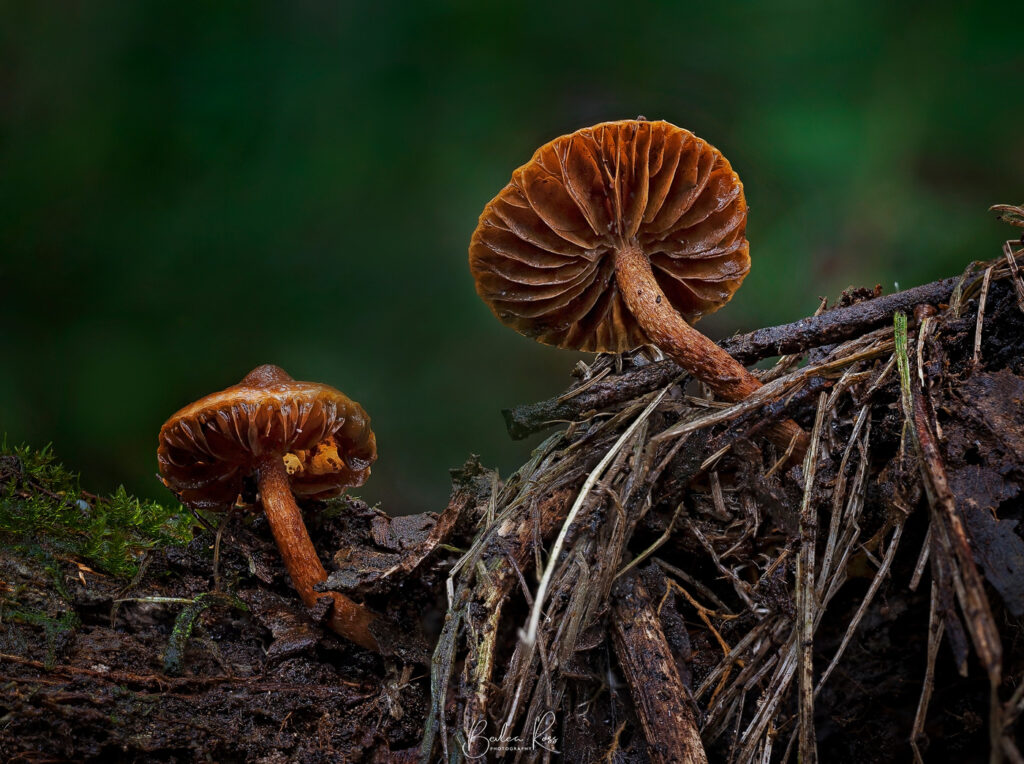


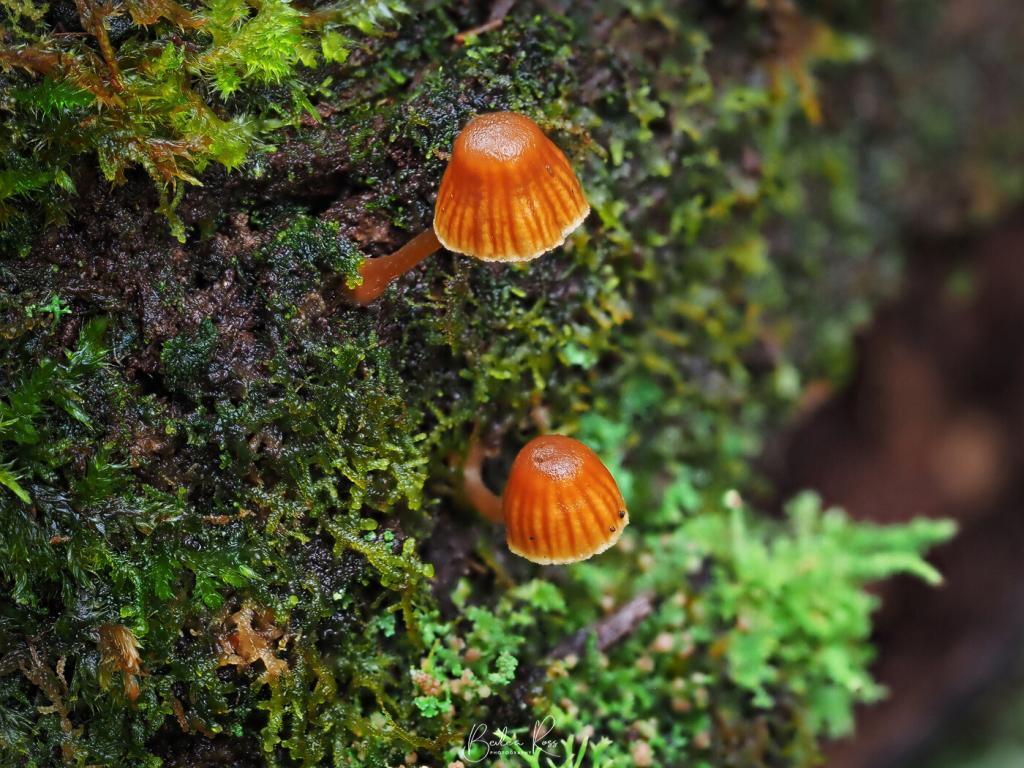
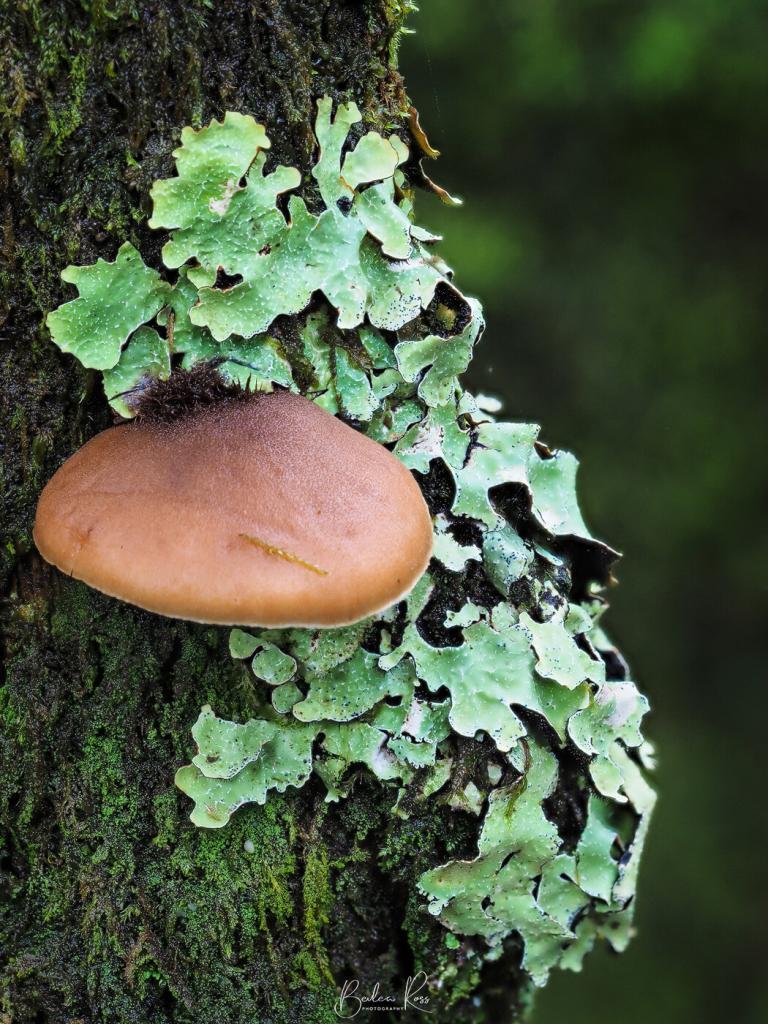


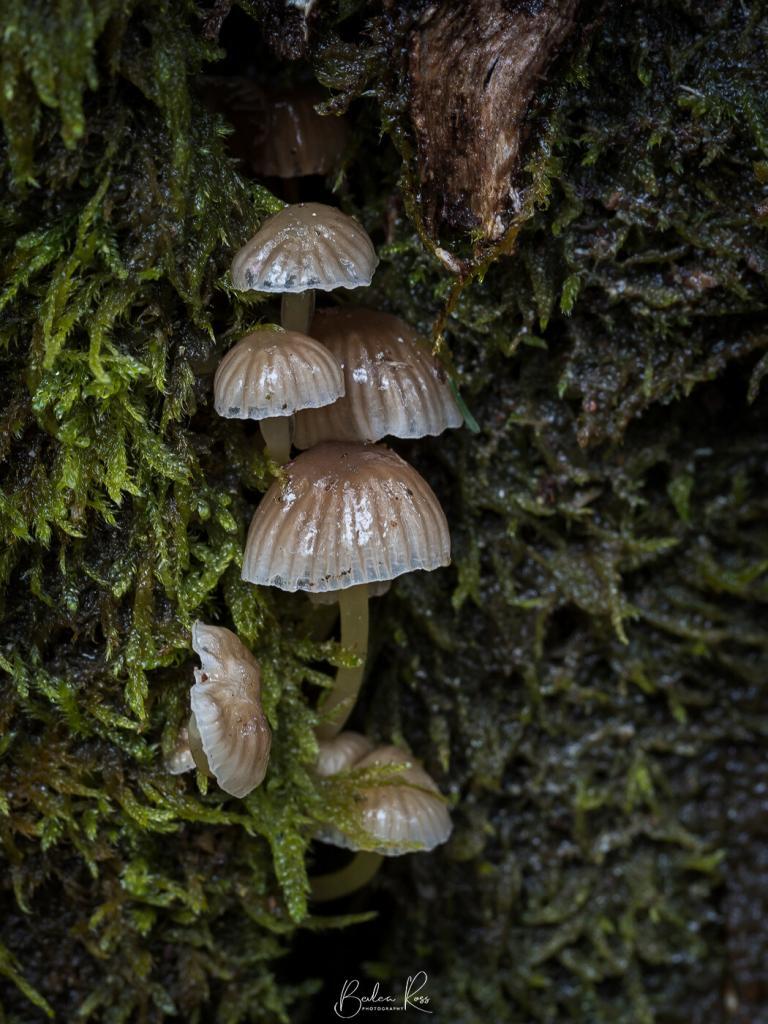
Focus Stacking
I was shooting with the Olympus OMD EM1 Mark II, giving the new 60mm Macro its first real run, and trying out Focus Stacking for the first time on the Olympus, which worked fantastically! I just love it; it creates eight images at different focal lengths, then merges them in-camera into a single image (jpeg) that’s (theoretically) sharp front to back. Considering these were taken on a macro, which usually has a very narrow depth of field, it worked great. I can’t wait to try it on the 12-40 for landscapes. You end up with eight jpegs, 8 RAW and the blended jpeg. As I prefer to work with RAW files, I deleted the jpegs when I downloaded them to the computer and then blended the RAW files in Photoshop.
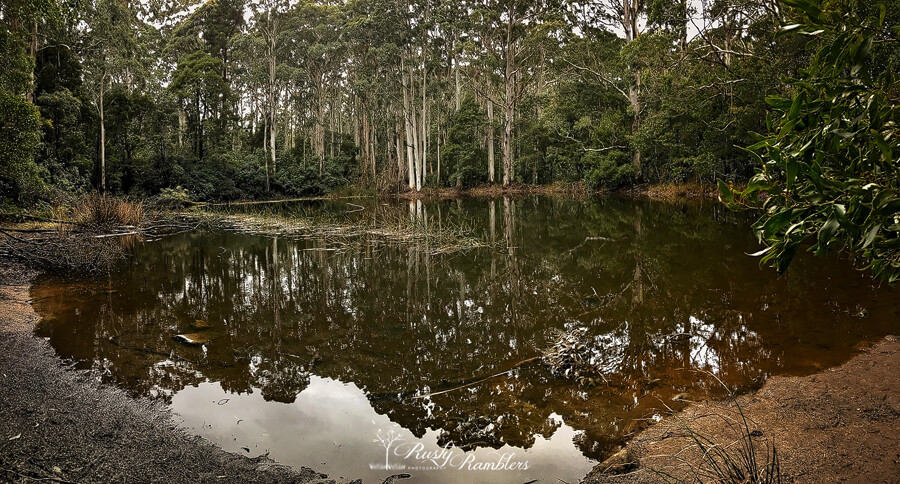
By around 1.30 pm – hungry and chilled to the bone, we headed back to the car, grabbed our picnic lunch and headed to one of the picnic tables. We quickly ate our lunch and then dived back to the warmth of the car for the trip home. We had a fabulous morning, we all got a great crop of images, but all need warmer winter gear 😉
In December 2017, Melbourne Zoo opened a new exhibit – the Carnivores Trail. The new enclosure houses the Lions, Sumatran Tiger, Tasmanian Devil, African Painted Dog and Snow Leopard. I had been to the zoo many times and failed to get a ‘shot’ of the tiger. He always seemed to be hiding at the back of his old enclosure, so I decided another trip was in order.
the Carnivores Trail
On the day we visited, the Lions weren’t on display as they were adding new tree trunks for them to climb on. Considering we visited in February and the ‘Trail’ had only been opened for around seven weeks, it was disappointing and poor planning on the zoo’s part. Another disappointment was that the trail wasn’t circular like the map at the entrance. Once past the invisible snow leopards, the trail was blocked, and a sign told us to retrace our steps. So while the trail was open to the public, it seems that it’s certainly not finished.
Snow Leopards and tigers
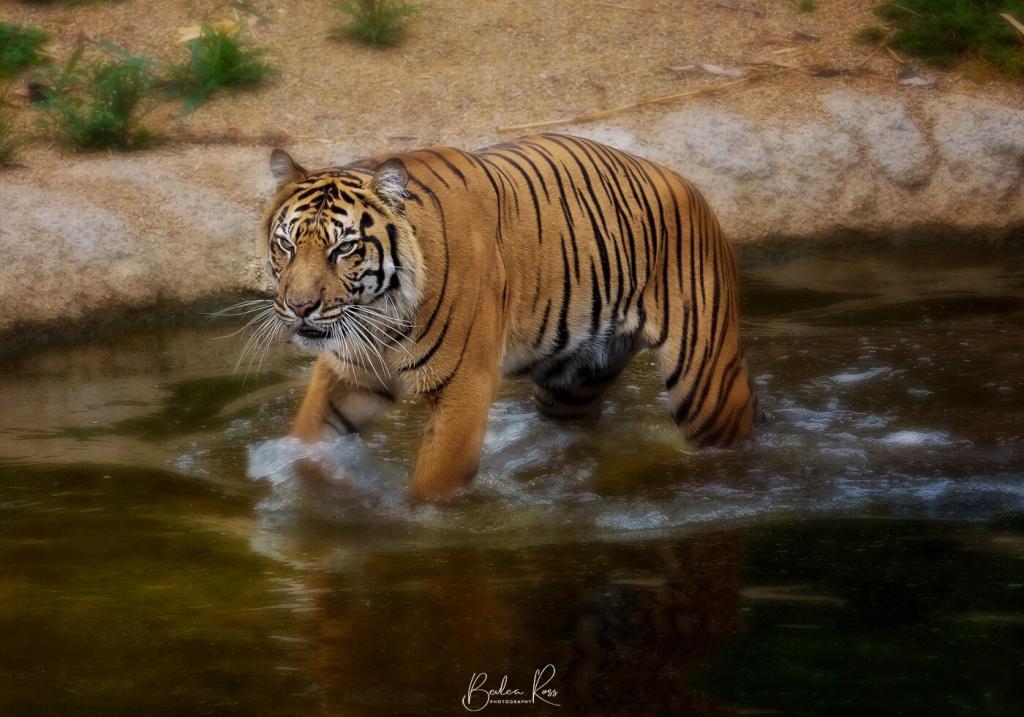
The snow leopards have mythical status as they are hard to find. When we visited again, they were nowhere in sight. A fellow photographer had visited five times since the opening of the new trail and had not seen them once. The new Tiger enclosure is excellent. We were lucky to see him wading back and forth in the water for a good ten minutes.
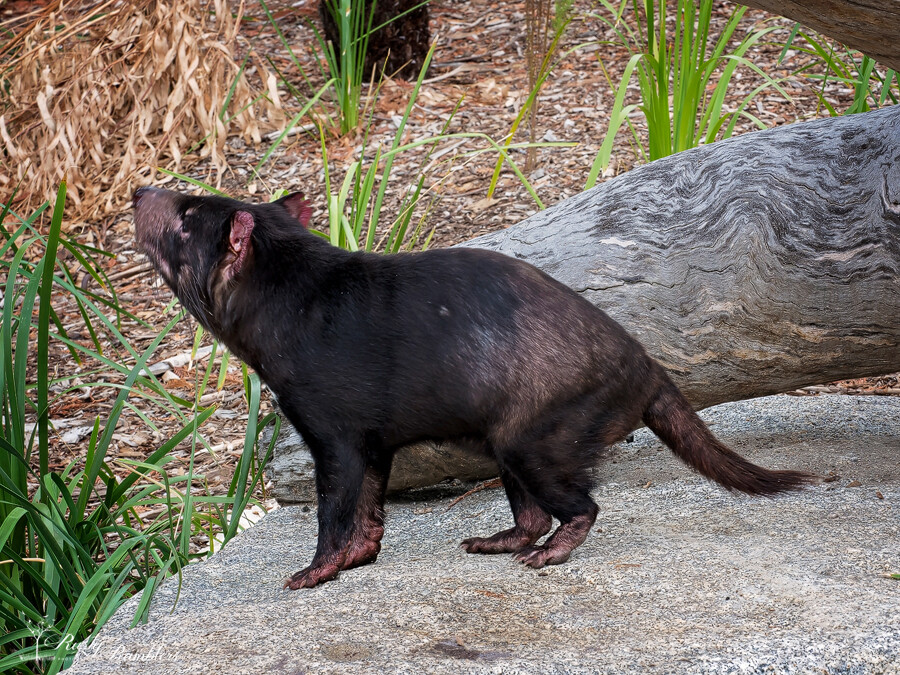
Lemur Island
From the Carnivores Trail, we headed off to Lemur Island. Not actually an island but a fully enclosed walk-through exhibit where the Ring-Tailed Lemurs swan around relaxing and observing the visitors…


Gorilla Rainforest
Lemur Island leads to the Gorilla Rainforest. Among the Western Lowland Gorilla and other animals, it’s also home to the tree-tops apes and monkeys.



Butterfly House
We headed to the Butterfly House from the Gorilla Rainforest. This is one of my favourite exhibits at the zoo. It’s home to hundreds of butterflies fluttering around and landing on people.

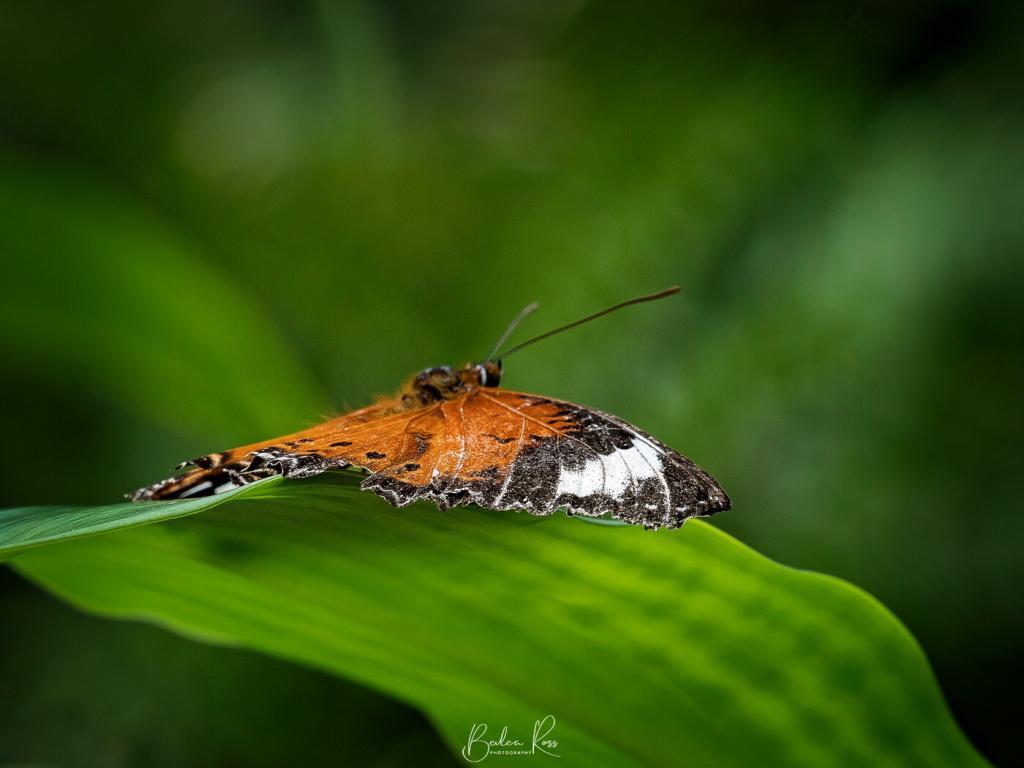


Werribee Open Range Zoo is set on approx 225 hectares within the Werribee Park Precinct in K Road Werribee. Its neighbours in the Werribee Park Precinct are the historic Werribee Mansion and the Victorian State Rose Garden.
Fighting Extinction
The zoo is a world-leading, zoo-based conservation organisation dedicated to fighting wildlife extinction. To this end, Werribee Open Range Zoo has several captive breeding programs of critically endangered animals. As a result, in 2021, Zoos Victoria, of which Werribee Zoo is a part, successfully:
- 50 Grassland Earless Dragons – not seen in the wild in Victoria since 1969
- 4 Mountain Pygmy Possums – fewer than 2000 left in the wild
- 21 Helmeted Honeyeaters – fewer than 200 left in the wild
- 11 Eastern Barred Bandicoots – extinct in the wild on mainland Australia
- released 8 critically endangered Plains Wanderers into the wild – number left in the wild 250-1000
- released 1,380 critically endangered Southern Corroboree frogs into the wild
- bred 16 Tasmanian Devils
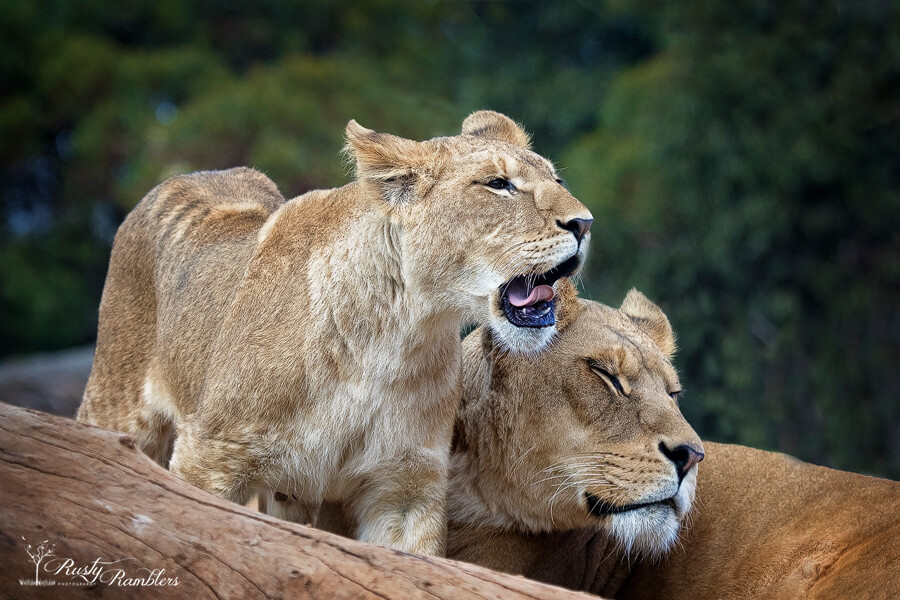
Modelled on an African theme, the zoo is home to gorilla’s, Hippo’s, Rhino, Camels, American Bison, Przewalski’s horse, several varieties of antelope, monkeys, painted dogs, giraffes, and cheetahs. You can take a free bus ride through the savannah lands as part of the entry fee. But this day, along with around 25 fellow photographers from the Victorian Photographers Collective, we took the off-road safari for an additional cost.
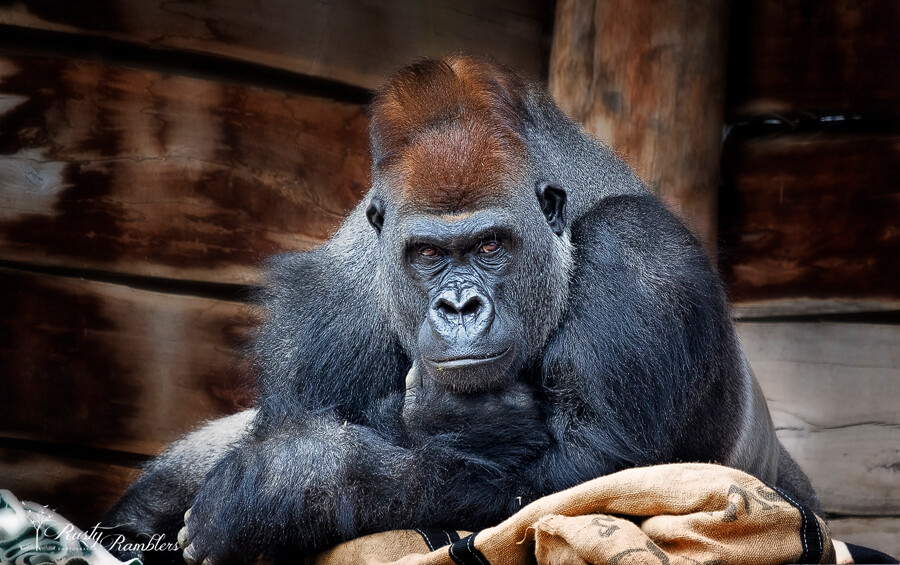
Off Road Bus
For a very reasonable $50, we went off-road in the savannah over ninety minutes, stopping at each animal group for up close and personal photos. I’m spoilt now and can see myself ever doing the big free bus again. Once off the bus, we met up again for lunch, then wandered off in different directions to get some more shots before heading home. Fabulous day with lovely company!


Tilt-Shift photography or miniature faking is a creative technique whereby a photograph of a life-size location or object is manipulated to give an optical illusion of a photograph of a miniature scale model.
source: www.tiltshiftphotography.net
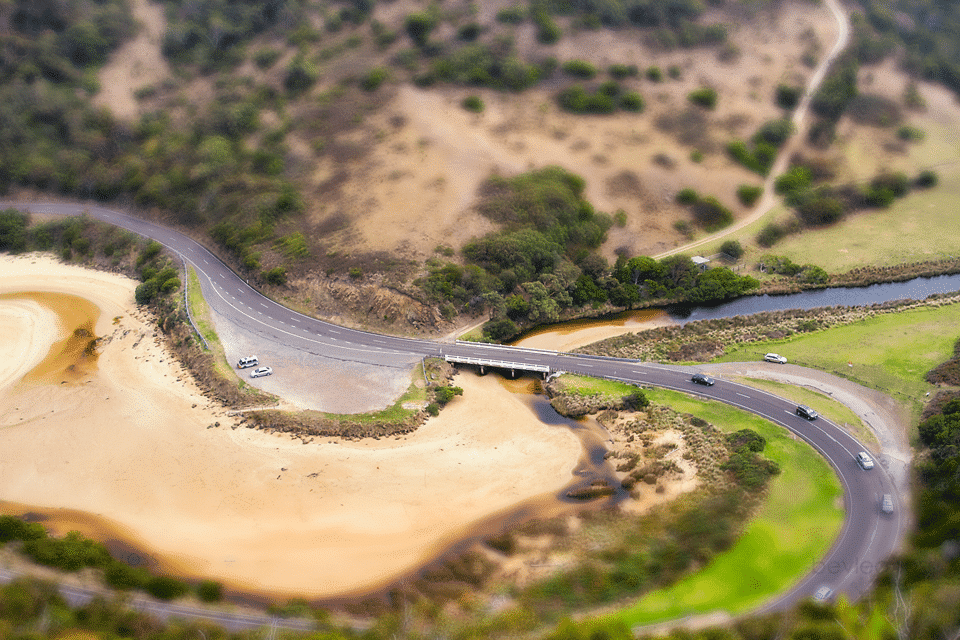
While there are tilt-shift lenses available out there, for something that you would only do occasionally, editing an image to give a tilt-shift appearance is much more realistic cost-wise, as it involves no expensive outlay of new gear.
When creating your tilt-shift image, a couple of things improve the overall impression of a miniature scene.
- Increase the color saturation and contrast, to simulate the bright paint often found on scale models
- Tilt-shift photographs look best or most effective when they are taken from a high angle to simulate the effect of looking down on a miniature scene. This works particularly well on buildings, cars, trains and people and street scenes. It’s a balancing act… too high, and while Tilt-Shift still works you lose the effect if the objects or people appear too small. Too low and they look too large to be miniature. In my personal preference/experience around 5-7 floors up is optimal at around 24mm, above that you need to zoom in. Highrise city car parks work great for this. In the examples below – the train lines were taken at a much higher elevation and look more ‘miniature like’.
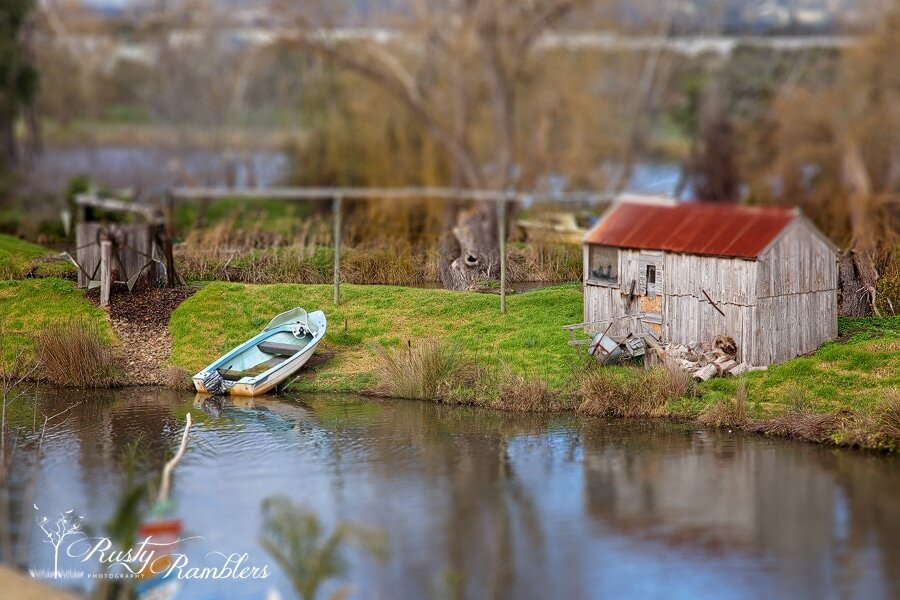
Caribbean Gardens, Melb – about three floors up

Taking the image
Shoot the scene as you would normally, then edit using your favourite software. Once the image is to your liking, there are a few ways to achieve the tilt-shift/out of focus areas
- Tilt-Shift Maker is a free web site where you can convert your image to tilt-shift. Upload your image, convert, and download. Images up to 2000px are free, above that there is a fee
- Do it step by step, in Photoshop. A good tutorial is on Tilt-Shift Maker
- Topaz Lens Effects it has several very good lens effect you can apply to images, one of them being Tilt & ShiftPhoto
- Photoshop has a tilt-shift hidden in its blur gallery. Go to Filter>Blur Gallery>Tilt Shift. You can adjust the amount of blur, move the centre focus point to where you want it on the image, adjust distortion etc.,
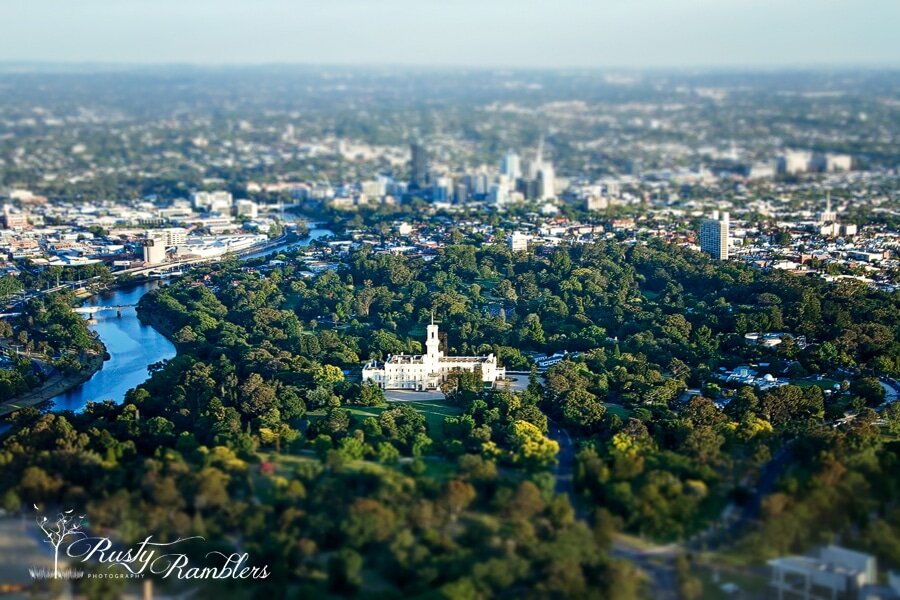
For those who like time-lapse, you can also do a tilt-shift time-lapse. However, this may require the actual tilt-shift lens or advanced software. It’s worth watching the short video Miniature Melbourne by Nathan Kaso as it gives you lots of ideas of what to shoot to achieve the effect. and if you are familiar with Melbourne. where to go to get that shot.





